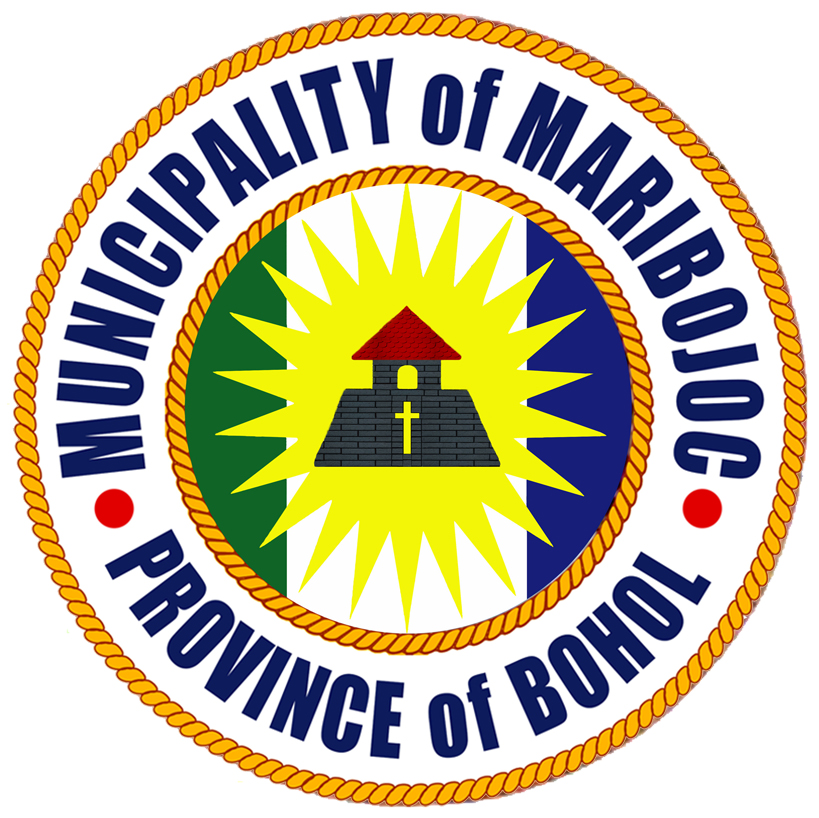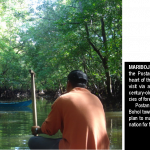PINOYS ABROAD TAPPED TO WAKE UP SLEEPY TOWN OF BOHOL
by JEREMAIAH M. OPINIANO
OFW Journalism Consortium
MARIBOJOC, Bohol–THE explorer Pigafetta would have chosen this town over Mactan had it already sported a Hollywood-like sign on its mountain ranges.
But had this town did, it may have attracted not only Pigafetta –desperate to escape after his and Ferdinand Magellan’s fleet was pummeled in the Battle of Mactan– but also other explorers who may know only Bohol because of its famed chocolate hills.
That is ultimately what this project hopes to accomplish, according to mayor Leoncio Evasco: to lure back its former residents, or at least their resources, from abroad.
Evasco said he has secured commitment from the Maribojoc Association USA to construct a Maribojoc billboard —similar to what Hollywood in Los Angeles, USA, has— on the side of the mountain range that faces the Maribojoc Bay.
Evasco is the man behind such project that, he said, aims to raise tourism receipts and attract investors in his town, a five-minute ride northwest of Bohol’s capital city of Tagbilaran.
Evasco said he’s starting with Maribojocanons overseas as a target market.
“We want to raise awareness to the returning Maribojocanons about the town that they left, of what it has become today, and of the values and people that were lost here.”
Evasco spoke to the OFW Journalism Consortium last month to promote the project, which will be announced during the annual town fiesta on May 5.
The fiesta is the highlight of a town-wide reunion from April 10 to July 31 called Balik Maribojoc.
Aside from announcing the construction of the Hollywood-like sign, the reunion aims to showcase some of Maribojoc’s tourist spots.
One of this is Punta Cruz, Bohol’s remaining watch tower, which deterred Spanish pirates during the 19th century.
Punta Cruz is also symbolic for overseas Filipinos and their families in Maribojoc since it is here where the germ for the town’s version of diaspora philanthropy was seeded.
Crossing
PUNTA Cruz is a historic site for the informal, town-wide group of families of overseas Filipinos who meet in this triangular, sturdy structure almost every month.
The last gathering in October of over-300 families affirmed Evasco’s belief in the possibility of tapping OFWs as source of social investment.
People just kept coming and the seats were not enough. Municipal government employee James Mabilin, then manning the entrance of the watch tower compound, couldn’t stop the influx.
The organizers said they expected representatives of only 200 migrant families.
Seafarers waiting for their next contract bankrolled lechon (roasted pig). College-schooled children of overseas Maribojocanons hosted parlor games around the grassy complex.
Amazed at the turnout, Evasco said he donated P5,000 for additional cash prizes for the parlor games.
“We never had this kind of a crowd, coming from OFWs [and their families] in our town,” Evasco said.
Still, those who joined the gathering represented only half of the total 742 overseas workers and emigrants from this town of 18,133 people.
The figure is based on Mabilin’s census of families with dependents and relatives abroad in Maribojoc’s 22 upland, lowland, and coastal villages.
While only half were represented in that gathering last year, it failed to dampen the spirit of Virginia Alindajao, 48, wife of an electrician in Saudi Arabia since 1993.
“I never realized that we OFWs and OFW families,” she said in Tagalog, “are just around waiting to get ourselves together.”
Alindajao is also one of the organizers of Punta Cruz Environmental Organization.
When the buzzword of forming an OFW group swept Maribojoc, she signed up.
Alindajao’s euphoria was shared by Laura Manuta, mayor Evasco’s sister and a former nurse in Germany and in Saudi Arabia.
Manuta is also a volunteer nurse for the Holy Cross Parish’s medical clinic since retiring in 1997.
She’s also president of the land-based OFW family circle group called the Maribojoc Land-based Migrant Workers and Beneficiaries Association.
On the other hand, the Maribojoc Seafarers and Beneficiaries Association has the town’s agricultural officer, seaman’s wife Eva Bolasco, as its head.
Stronghold
THE stronghold of Maribojoc’s OFW population, Mabilin told the OFW Journalism Consortium, is not the remittances plowing into the town, estimated to be between P52 to 84 million annually.
It is the OFW townmates’ alayon (bayanihan in Tagalog, or community spirit), Mabilin said.
Last December, the groups recommended foregoing a town-wide Christmas party to donate school supplies and slippers to children in the town’s poorest village of Candavid.
Filipino migration-and-development analysts have remarked the potential of luring the resources and bayanihan spirit of overseas Filipinos and their families right in the migrants’ rural hometowns.
Evasco and the OFW family circles that his office, the Municipal Manpower Development and Placement Office, facilitated to organize are seeking to make that spirit transform the town into an economic paradise.
Currently a fourth-class municipality whose income in 2008 was P61.358 million, this sleepy town lacked jobs, forcing some middle-class residents go to the provincial capital of Tagbilaran City, the cities of Cagayan de Oro, Cebu, Davao (like Evasco himself) and Manila, and overseas.
Overseas Maribojocanons’ remittances that pass by the town’s only two pawnshops, as well as banks and money transfer outfits in Tagbilaran City (some 14 kilometers from Maribojoc), are the single biggest economic drivers of Maribojoc, says Evasco.
The lack of vibrant economic activities apart from retail trade, fishing, and farming made Maribojoc a fifth-class municipality previously.
“Nothing wrong if you go elsewhere,” two-year mayor Evasco recalled telling some Maribojocanons during casual conversations, “but come back home and bring with you the ideas and experience you learned elsewhere.”
Maybe after the Hollywood-like sign facing the sea, some would mimic Pigafetta’s journey but not accidentally landing in this town whose name was taken from a pine tree named “Malabojoc”. # – OFW Journalism Consortium
CRUISING AND COMBING MARIBOJOC
Written by Doods de la Cruz
Take a breeze flight to Bohol’s Tagbilaran airport. Then roll up a trip 14 kilometers going up north. It’s the opposite route from the world famous Chocolate Hills, so that keeps you far from the maddening crowd.
The town of Maribojoc stands humble in its beauty and sits quietly in its majesty.
A bit of trivia: Maribojoc got its name from a tree that is abundant in the area. The tree is very much like the Pine tree… except that its needles are a bit thicker and firmer like wild hair. Thus in the ancient times they literally translate to Maria’s Hair. Hence Maria Buhok uttered from generation to generation became Maribojoc.
Back on the road: It isn’t that long a trip, while you check out the eye-refreshing and spirit-energizing scenery. On the road, peek out the car window and check out the enticing Palm-tree-and-mangrove-lined Abatan River. The river’s calmness and quietness whispers sweet poetry to one’s ears. Going to Maribojoc is like receiving an RSVP invitation of quiet yet exciting adventure and amazing discoveries.
Check this out, at the edge of Maribojoc, in its last Barangay, is the Punta Cruz Watch Tower or “Castillo de San Vicente.” Built in 1796, the tower stands as a look out point for the inhabitants for pirates and other invaders. Today it stands as a regal monument that withstood time and elements. Just beside it is the equally magnificent ancient cross that watches over the waters of Maribojoc. Boldly romantic is an understatement to describe its surroundings.
Move on and check in at the nice resorts tucked in at the seashore stretch of Maribojoc. From the Beaches of Maribojoc, take a boat and proceed to enter Abatan River and cruise along five towns (Maribojoc, Cortes, Catigbian, Balilihan, and Antequera). Inside the Abatan River stands the Postan mangrove forest barely touched by human feet and inhabited by exotic colorful birds and fauna… whoa… cruising inside Postan Forest makes you feel like canoeing along the Amazon River minus the anacondas. Truly it is totally a different encounter than paddling along the more known Loboc River also in Bohol. The Abatan River has many traits all too inviting for one to discover and conquer its many possibilities.
Mesmerizing scenery
One traveling in this river can’t help but be mesmerized by the mirror reflections cast in its deep emerald green waters. The river water juxtaposes a mirror image of everything facing it, the skies, the palms, the trees, and even the boat. And the result is an artwork only nature can create. Go! Look straight at the river and greet your own reflection.
It is such, the river is littered by nature’s scraps justifying the abundance of growth all around the river. Various leaves, palms, bamboos, tree branches and fruits all add up to the river’s litter. Yet no matter how much of these you see around, the river has a totality of virgin cleanliness.
And the trip doesn’t end there…
Somewhere along deeper on the boat ride, a traveller is welcomed by the roaring of the hidden Kawasan Falls (Balilihan Town).
Experience and feel the energy as the crystal clear water of Kawasan Falls powerfully cascades down and drops straight to a basin of equally crystal emerald green river water and burst into a mystic explosion of sounds and colours reflected by sunlight.
Tranquil yet bursting with serene life… the Abatan River is a place to be. It lies waiting to be conquered and experienced.
Indeed, discovering the Postan mangrove forest and the hidden Kawasan Falls and just relishing the sight of the abundance of growth along the Abatan River is enough to keep a traveller unmindful of time.
Maribojoc doesn’t run short of places to discover. The Maribojoc Church is one spot to visit. Its serenity is an open invitation for one to commune peacefully with the Creator. And tucked at the second floor of the ancient church is a modes museum. Yet, it has a great collection of antiques and religious artifacts. The museum is a one room affair. One can spend hours inside it just looking, scrutinizing, and admiring its collection.
Maribojoc is blessed with a variety of landscapes surrounding it. It has mountains both for trekking and climbing. Just moving around closely in the mountains one can hear the cries of the monkeys fooling around criss-crossing tree branches.
Truth is, a day or two is a bit too short for one to explore and get acquainted with Maribojoc. It is a town gifted with a wonderful river full of surprises and with so many curves and bends that getting lost in it is a delightful experience. It is a town blessed with many breathtaking beaches shrouded with beautiful skies and graced with equally breathtaking sunrises and sunsets. It is a town waiting to be explored, discovered, and conquered.
Maribojoc is a town so graced with a God-sent Mayor whose simple lifestyle is emancipating… a mayor that has a heart open to its people and its visitors… a heart that loves his native Maribojoc and its people… the way any son would love his mother and his siblings. The Mayor? Who? Mayor Leoncio B. Evasco, Jr. – the Renaissance man. Believe me… I’ve been a visitor and I will keep on visiting.
Be there! Be an explorer. Be a conqueror. Re-discover ancient roots.
Get wet, wild, daring and start combing Maribojoc. Written by Doods de la Cruz


